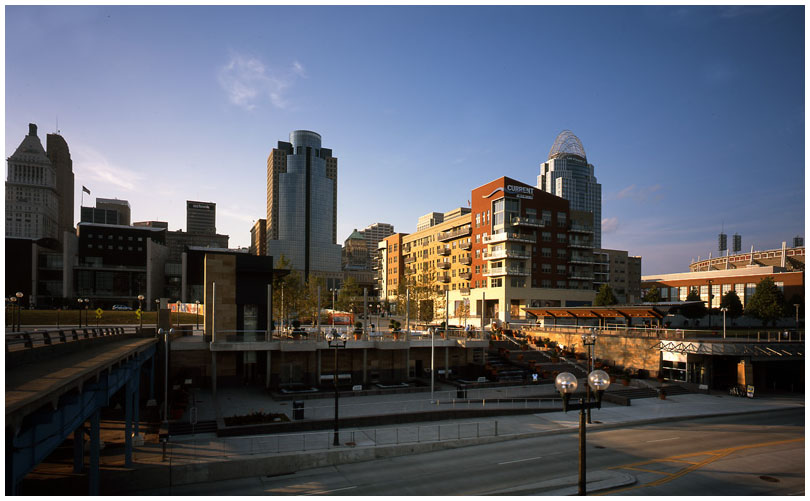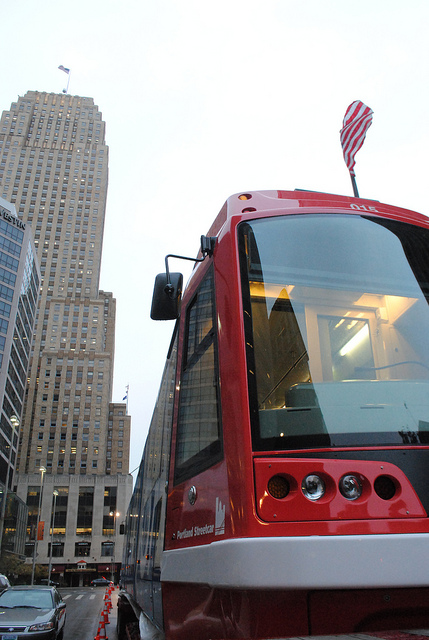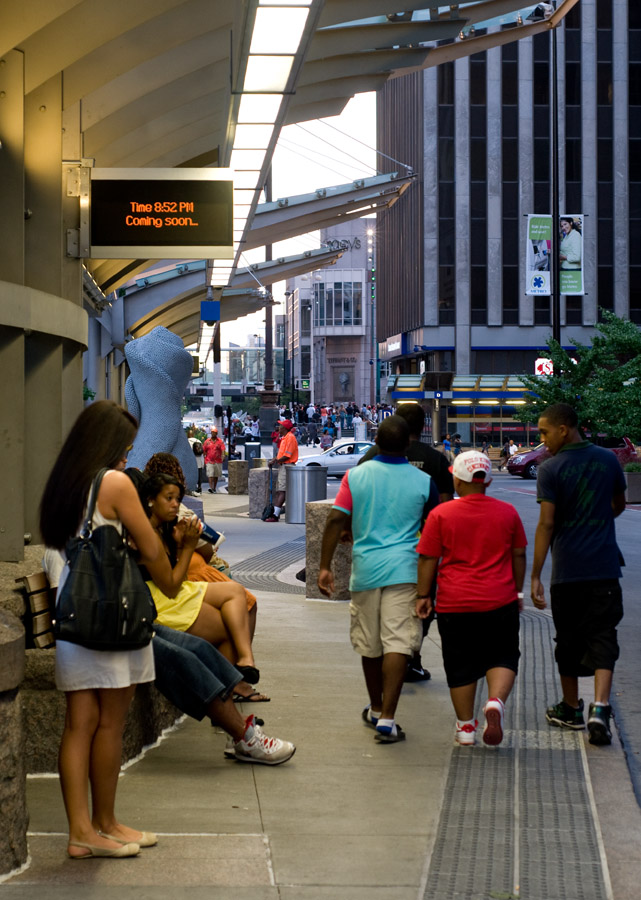With the phase 1A of The Banks development now at capacity, the development team is gearing up to start construction on the next wave of vertical construction.
Project officials now say that there is a 60-person waiting list for the 300 apartments and 92 percent of the 96,000 square feet of retail space at The Banks are occupied. At the same time, the City of Cincinnati and Hamilton County have finished work on the public infrastructure that will lift future phases of The Banks out of the Ohio River’s 100-year flood plain.
Developers are optimistic that work can soon begin on phases 1B and 1C which include an office tower at Second Street and Walnut Street, and a hotel at Freedom Way and Main Street.

Phase 1A of The Banks development is already at capacity, and investors are gearing up for construction of the next wave of buildings. Photograph by Jake Mecklenborg for UrbanCincy.
“We are in active discussions with potential hotel developers, and we’ve been out there trying to sell that office pad site,” explained Libby Korosec, Public Relations Representative for The Banks development team. “The office market is tough in downtown Cincinnati right now with the Great American Tower coming online.”
Korosec says it will more than likely take a 60 to 70 percent pre-sale on the office building to make it a reality, but that they are moving forward with plans for phase two which will include another 300 apartments and ground level retail.
The second phase of work will take place along Vine Street in between Second Street and Freedom Way, and work is expected to break ground in December 2012. In addition to phase two work, passerbys will most likely see work begin on the second restaurant building pad in front of the National Underground Railroad Freedom Center in the near future.
“The Freedom Center pads are part of phase one work, and we are in active discussions for the other pad site to compliment Yard House,” Korosec told UrbanCincy.
While phase 1A retail is nearly fully leased, all of it is occupied by bars and restaurants. In early 2012, the project’s commercial leasing agent said that has been the target tenant thus far, but the development team is now saying there may be some flexibility to that leasing strategy.
“Phase two will be mixed with retail of some type, but we’re not sure if it will be the same mix as phase one, or more of a service retail mix to service The Banks and Downtown,” Korosec clarified. “We’re out there right now taking a look at what that mix is, and what kind of density we want to build.”
Once complete, The Banks will be the region’s largest mixed-use development and will house more than 3,000 new residents. The economic impact of phase 1A work is already estimated at more than $91 million annually – a number that will grow to $276 million once the office tower and hotel are complete.





